Spagyric herbalism originated within the alchemical and herbal sciences of the Indo-European cultures, as Paracelsus is said to have learned many of his techniques in India and related foreign lands. These elixirs are the essence of ancestral herbalism, of a synergy of human evolution and the sacred, healing plants. They are made in a traditional manner, of pure, organic ingredients fermented in the natural sugars and rasa (sugars) of the forest, then distilled, and this is used to extract more of the herb.
This is digested in precise human body temperature for the alchemical seasons of birth, nine months and this results in the mother tincture. This is the source of these powerful, artisan medicines of the yogis, Siddhas, Gurus and herbalist masters. Take these herbs in mindful meditation, as part of purifying protocols, as catalysts for yogic and tantric rites, to rekindle the fire within, to reconnect with self and loved ones, as a tonic for intimacy and rejuvenation. It is beyond an aphrodisiac, but a force, a message and signal. This part of a true noetic herbalism, to bridge mind/body estrangement and to reconnect, harmonize and balance the inner world.
Shatavari (Asparagus racemosus) is a member of the Liliaceae family that grows throughout India and is a relative of the Western asparagus root. The traditional name translates to a “hundred husbands” that gives a sense of the sexual and energetic power it can impart to the female. We mention in the Vajikarana listing that the king had to satisfy women, not just as a matter of pride and ego as a man, but as a matter of political and social stability. Bloodlines were integrated through the royal lineage to preserve alliances and power and the king’s vitality was always understood as having a part in the abundance, the fertility as prosperity of the realm.
In the Vedic tradition, there is also the famous heroine of the Mahabharata Draupadi who must be the wife of five brothers. Here is an ancient matriarchal understanding of the role of the queen as the essential power of the kingdom, and her health and erotic energy as the vital source of creative energy, that which sustains both the universe and the domestic hearth. Her power extends to the highest and the lowest, as the potential power of birth in the procreative and the magical sense of manifesting intention. A woman’s health is integral to society, to community, to the home and family, and woman is the living presence, an avatar of the Goddess.
It is therefore a deep concern that as herbalists we are besieged with complaints of women’s health from reproductive to hormonal, from sexual to mood and all of these can be traced to the ‘perfect storm’ of what amounts to an assault on the biological balance of the female. From the chemicals in soaps and food-additives, to other cosmetics and medications the adrenal and hormonal systems are negatively impacted in both profound and subtle ways. These can manifest to anomalies of menstrual cycles, sleep, emotional stability, food cravings, erotic inclinations or issues arising in transitions from different phases of life.
The first step is to always purify, detox, cleanse, to stop adding in the toxins, the negative inputs that wreak havoc on the body, psyche and vital spirit. This is the true fasting, and it is not just reduction of food, but in restricting what accesses the inner world. Herbs should be taken in the highest state of purity, but also to purify. They should be taken in the conditions to prime their use, in a pure, clean and light diet, in rituals that cleanse the atmosphere, and in engagements of the senses that pacify the soul and nourish the spirit.
Shatavari is an elixir to induce and prime for these experiences. It is a true medicine for the body and mind and a way for those who feel disassociated from their sensual aspects, or have become traumatized and estranged from certain intimate relationships to heal, to have a gentle catharsis and to combine with meditation, yoga and a healthy lifestyle to begin a new period of rebirth and transmutation. The most medicinal kind of shatavari, and there are a few different varieties, but in the herbal trade there are mainly two, one from India and one from Nepal. The one from Nepal is considered superior for medicinal qualities.
Shatavari is considered heavy, cold, bitter, nutritive, relieving of vata and pitta and is a superior Rasayana, especially for women. Traditional uses, for both sexes, are to alleviate fatigue, insomnia, weakness, laziness, urogenital disorders. It is cherished to increase intelligence, for weak eyesight, as a blood purifier and is a potent anti-inflammatory agent. As all rasayana texts note, it is crucial in many of the formula as ingredient providing energy to the body without the crash of pure stimulation, such as from caffeine. It is taken in powder form in traditional ways for pregnancy for the health of the mother and child, and infused oils are used to tone and lubricate the vagina for delivery and to maintain proper health. It is known to increase breast milk, and coughs, even in infants and is good for throat problems as well. There have been many studies of its clinical use in treating ulcers, in boosting immunity, in producing breast milk, but also in male infertility, in nausea and vomiting, and in more dire conditions. It is also a great general tonic, especially in combination with such polyherbal formulas like Dhatriyadi yoga. It is in many rasayana and Ayurvedic formula as a potent adaptogen and potentiating herb.
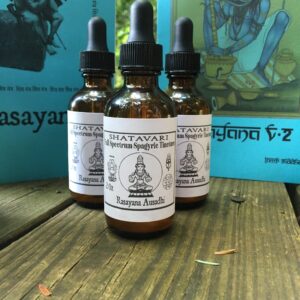
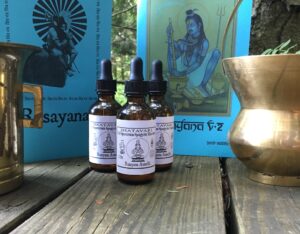
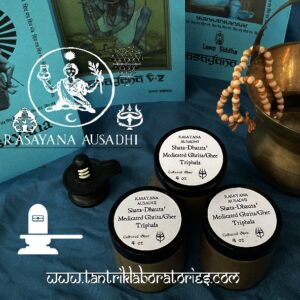
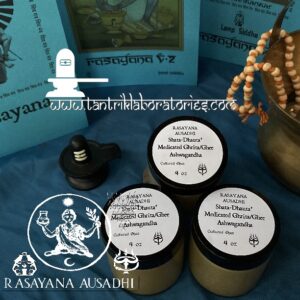
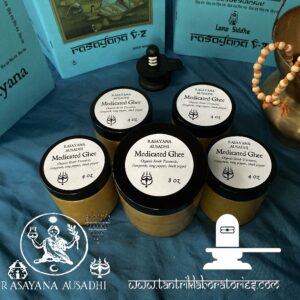
 Adding...
Adding...